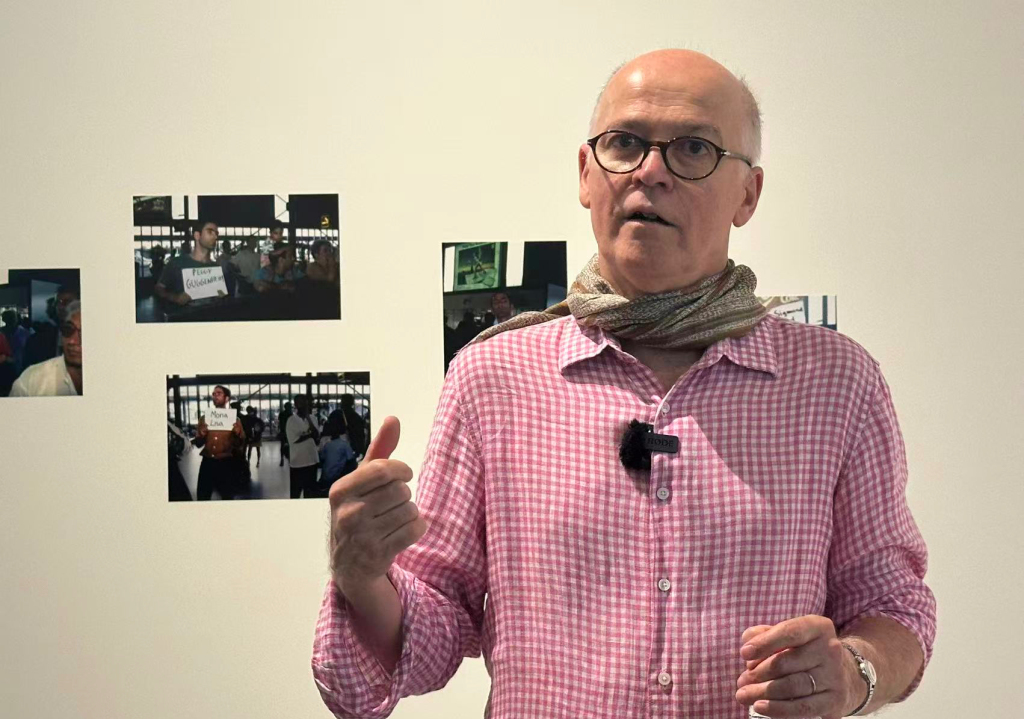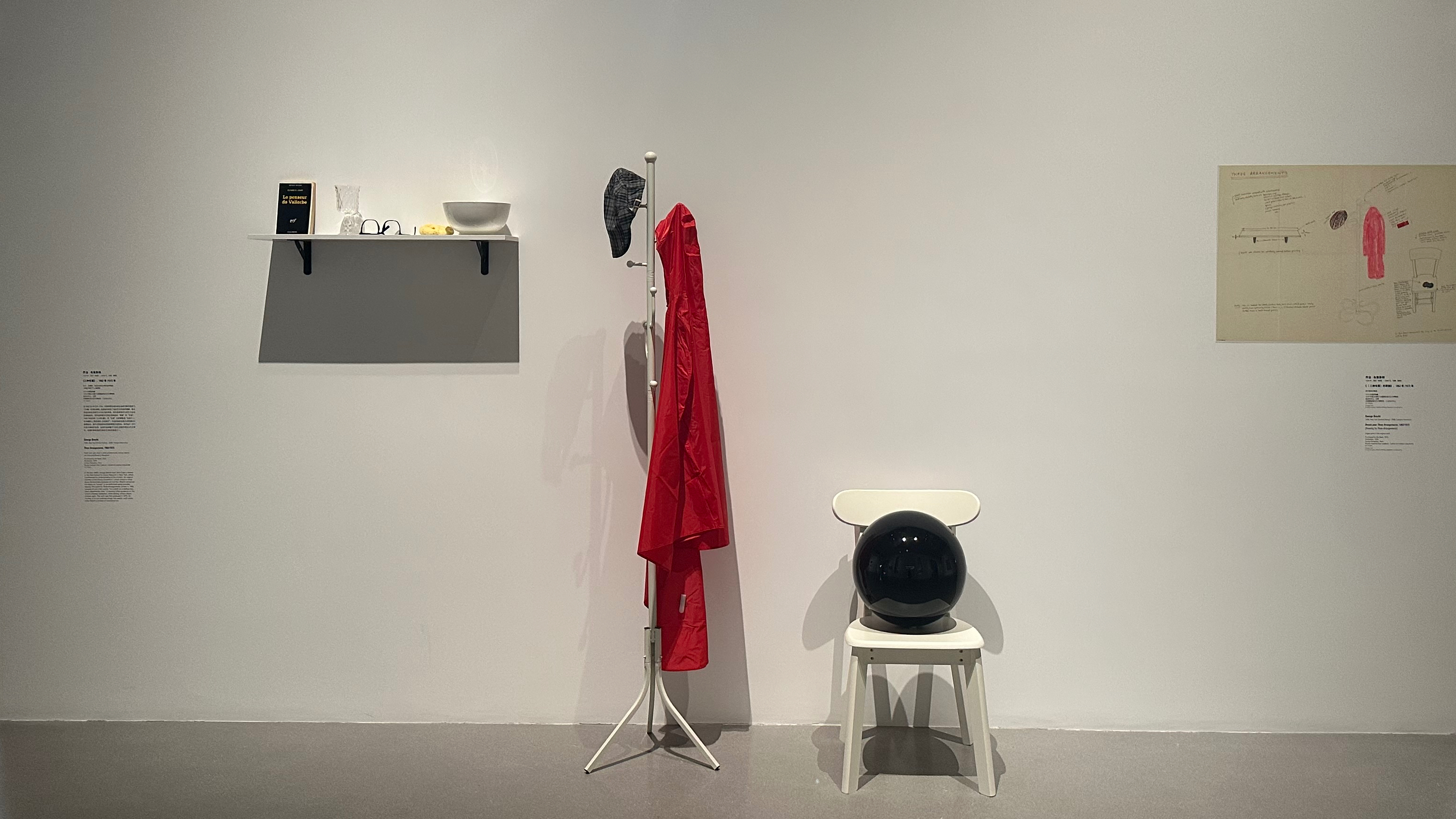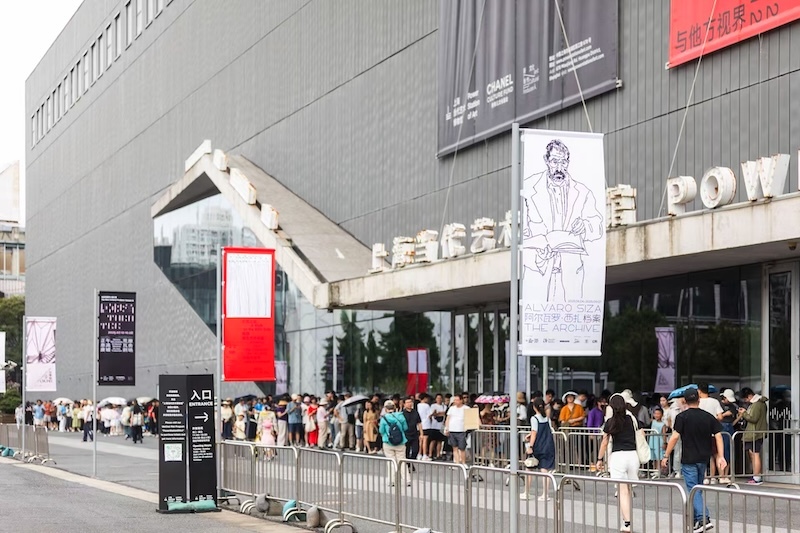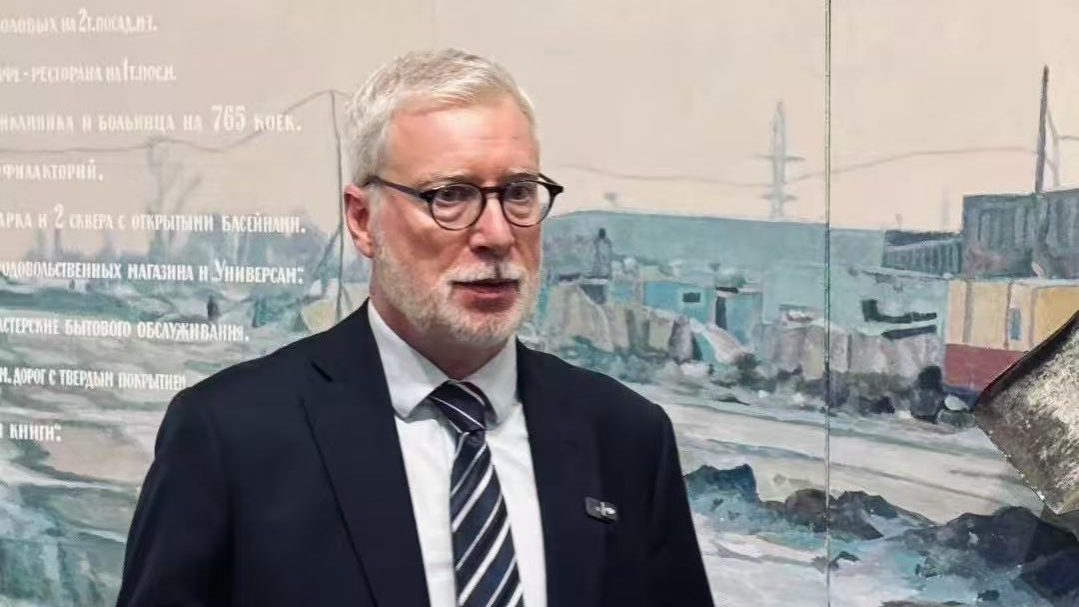
Fluxus was born in Europe and the United States in the late 1950s and early 1960s. It is one of the most avant-garde and rebellious schools in art history, attempting to break the boundaries between art and life, and between the elite and the masses.
"Accidental! Fluxus!" is currently on display at the West Bund Art Museum in Shanghai. This is the first special exhibition in a new five-year exhibition collaboration between the West Bund Art Museum and the Centre Pompidou in France, and the first comprehensive Fluxus exhibition in China. In addition to numerous works by European and American artists, the exhibition also features works by Chinese artists such as Huang Yong Ping. In a recent interview with The Paper | Art Review, Frédéric Paul, curator of the Centre Pompidou in Paris, stated that Fluxus is "the most inclusive art movement," and that the inclusion of works by Chinese artists throughout the exhibition stems from their inherent importance, not out of politeness.

Frederick Paul at the exhibition.
Frédéric Paul was born in 1959. He also curated the 2023 West Bund Art Museum's "Reflections of Portraits: Exhibition from the Pompidou Centre Collection (III)."
Regarding this exhibition, which has been in the works for a long time, Paul believes that art is not just painting or sculpture; it is essentially a spiritual and conceptual existence, and this characteristic runs through all ages. "When people talk about conceptual art, they often think of a specific period in art history, but in fact, all art has always been conceptual."

West Bund Art Museum and Centre Pompidou collaborate on a five-year exhibition project, featuring the special exhibition “Accidental! Fluxus!”, September 26, 2025–February 22, 2026. Exhibition view, West Bund Art Museum. Photo by Alessandro Wang.
Dada and Fluxus: From Rebellion to Everyday Heritage
The Paper: Fluxus originated from Dada. The exhibition poster uses Jonathan Munck's work "Waiting for Fame," where Munck holds a nameplate with Duchamp at the airport. What kind of relationship does this relationship between Dada and Fluxus convey? What are the similarities and differences between the two?
Paul: Munch's work "Waiting for the Celebrity" is very suitable for use as a poster, and it plays a role in connecting the past and the future. However, the tribute to Duchamp is not the only clue in Munch's work. He also quotes names such as "Mona Lisa".

Exhibition view, Jonathan Munch's "Waiting for Fame," 1995-1997

Jonathan Munch, Waiting for Fame (Mona Lisa), 1995–1997
As for the similarities between Dada and Fluxus, I think both share a certain "anti-" stance, and in some sense are anti-art. In fact, almost all major modernist movements were "anti-" movements. But what truly unites Dada and Fluxus is their ironic and lighthearted attitude.
At the same time, they all have one thing in common, which is that artistic practice itself is like a drama performed in front of the audience.

Exhibition view, Man Ray, "Dada Group", circa 1922, digital print of the original work, the person in the lower left frame is Man Ray.
The difference between the two lies first in the fact that Fluxus was a movement that brought together artists from diverse backgrounds and nationalities. They not only appeared at art festivals but also sought to disseminate their work through various channels. Dada artists, on the other hand, lacked this strong sense of dissemination. Another point is that the Dadaists directly broke with the highly innovative movements that preceded them, particularly Cubism. They believed that Cubism's heroic era had ended, that it had become a new academic school, and they sought to correct this trajectory of artistic development. Fluxus's criticism of contemporary art, on the other hand, was less vehement; they did not adopt a completely confrontational stance.
The Paper: George Maciunas wrote the "Fluxus Manifesto." What was his position within the Fluxus movement? You also mentioned that "Duchamp was the white moonlight and John Cage was the cinnabar mole." What impact did they have on the Fluxus movement?
Paul: Maciunas is a very interesting and influential character, like the "propaganda minister" of Fluxus. At the same time, he is also very contradictory.

Exhibition view, George Maciunas, "A Historical Development of Fluxus and Other Four-Dimensional Art Forms of Auditory, Visual, Olfactory, Skin and Tactile Feelings (Unfinished)" (detail), 1973
On the one hand, he was a graphic designer, undertaking virtually all of the visual design work for the Fluxus artists; on the other, he was also the author of the "Fluxus Manifesto." However, the manifesto didn't actually describe the intended practice, but, like all modernist manifestos, called for "the overthrow of everything." At the same time, he attached great importance to the concept of "lineage," interpreting and constructing this period of art history in his own unique way.

Installation view, George Maciunas, 20 Monogram Cards, 1963
But I think the most important person for Fluxus was John Cage. Cage did have some contact with Duchamp, so there were some connections between the two, but it was Cage who really played a decisive role.
First, he was the teacher of several of the most representative Fluxus artists, especially Lamont Young, Brecht, and Yoko Ono. Second, I think Cage's attitude was more open, while Duchamp was a bit like an enigmatic "Sphinx."

John Cage's "Rope"
The Paper: In 1985, one of the artists in this exhibition, Robert Rauschenberg, held a solo exhibition at the National Art Museum of China, which promoted the "85 New Wave" (Chinese contemporary art). What do you think of Rauschenberg's influence in China?
Paul: Rauschenberg is a very interesting figure. He was an artist closely associated with John Cage and performance art, but he also developed a very personal Pop language.

Exhibition view, Rauschenberg's video works
He had a significant influence in China, though the 1985 exhibition came a little late. By then, Rauschenberg's major works had already been completed, but the exhibition certainly had a significant impact, particularly on Huang Yongping, who also has a prominent presence in this exhibition; I suspect it also had an impact on Geng Jianyi.

Exhibition view, Huang Yong Ping's "Untitled" (partial), 1991-1992
Rauschenberg's importance lies in his straddling so many different fields: he is certainly a key figure in Pop Art, but he is also closely associated with Merce Cunningham (1919-2009) and dance. His art is incredibly rich, yet it is often oversimplified as "synthetic painting." In fact, we should also recognize the crucial performative nature of his work.
There is no doubt that the 1985 exhibition opened the eyes of the Chinese art world and made some artists realize for the first time that, in addition to Rauschenberg, there was a broader international art scene worth exploring.
Eastern echoes between Dada and Fluxus
The Paper: Huang Yong Ping and "Xiamen Dada" are integral to the history of contemporary Chinese art. What is the relationship between "Xiamen Dada" and this exhibition? Huang Yong Ping is one of the few Chinese contemporary artists well-known in Europe. What are your thoughts on his work?
Paul: Huang Yong Ping is indispensable to this exhibition. If the exhibition is to present the connection from Dada to Fluxus, Huang Yong Ping must be present. His presence is made possible through some extremely rare materials; his surviving works are rarely exhibited.

Exhibition view, Huang Yong Ping, “Xiamen Dada Performance: Modification and Destruction of Artworks Before Burning,” 1986
His presence from the very first section of the exhibition, alongside key figures of the Dada movement such as Duchamp, Raoul Hausmann, and Picabia, was a public statement to the audience: a Chinese artist was being presented to the public.

Huang Yong Ping, Xiamen Dada Performance: Burning Works, November 20-23, 1986, 1986
Later in the exhibition, we'll also see a unique photographic work by him. This work incorporates more and more elements that have entered his practice, including elements related to Chinese culture. In fact, these works may be more accessible to Chinese audiences than to French ones. For artists who bring their own country's art into a completely different context, there's always a risk of exoticizing it. Therefore, the presentation of these works in Shanghai, in a sense, brings them back to their "origin."

Huang Yong Ping, Untitled, 1991–1992, polyptych, gelatin silver print with pencil accents, various sizes, donated by the French Depository Bank in 2006, Centre Pompidou, National Museum of Modern Art – Centre de Design Industrielle, Paris. © Adagp, Paris. Photo: © Centre Pompidou, MNAM-CCI/Georges Meguerditchian/Dist. GrandPalaisRmn
It is very important to present his work within this exhibition framework. However, I would also like to remind everyone that a work by Huang Yong Ping has already appeared in the previous "Reflections of Portraits" - Pompidou Center Collection Exhibition (Part 3).

Huang Yong Ping's "Mona Vinci" (1986-1987) from the exhibition "Reflections of Portraits" - Collection of the Centre Pompidou (Part 3)
The Paper: Fluxus itself emphasized transnational and cross-disciplinary fluidity. This exhibition includes numerous Chinese artists, as well as Western artists' incorporation of Eastern elements (for example, Cage's manuscripts include a depiction of the dry landscape of Kyoto's Ryoan-ji Temple). How do you balance East and West, and between classics (such as Duchamp, Cage, and Beuys) and contemporary artists?
PJ: Fluxus emerged at a time when Eastern culture, particularly Eastern spirituality, was strongly appealing to many Western artists from various countries, particularly in the 1960s. For example, Cage was deeply involved in Zen Buddhism, and it's worth emphasizing that many artists were drawn to Orientalism as a kind of exotic influence.

John Cage, R=Ryoanji R/7, 1988
In the context of Fluxus, this influence did generate a response, and several Japanese female artists, in particular, embodied and continued this response.
The presence of Chinese artists is due to the inherent importance of their work, not out of politeness.
Yang Zhenzhong, Huang Yong Ping, Shi Yong, Yin Xiuzhen, and Geng Jianyi. Geng Jianyi stands out in this exhibition. For me, exhibiting Geng Jianyi's work carries a sense of urgency. His work connects naturally to Fluxus and Rauschenberg. It also addresses the question of "the encounter between the West and the Far East."

Exhibition view of Geng Jianyi's works "Two Four-beats" and "One Seven-beat of Dressing", 1991
Clearly, we still have much to share. I've noticed that Chinese artists seem more advanced than us in some respects. For one thing, most people in China have mastered the Roman alphabet, while the French can barely write Chinese. The Chinese often have a deeper understanding of Western culture than we do of Eastern culture.

Geng Jianyi, “Brushstrokes,” 2005 (left) and Francis Picabia, “Madonna,” 1920 (right)
Fluxus in the Present: Conceptuality and Poetry in Art
The Paper: How can Chinese audiences enter the context of Fluxus in this exhibition that contains almost no “paintings”?
Paul: We want to show the audience that art is not just painting or sculpture; it is essentially a spiritual and conceptual existence, and this characteristic runs through all ages. When people talk about conceptual art, they often think of a specific period in art history, but in fact, all art has always been conceptual.

Exhibition site
Therefore, I think it is very important for visitors to the West Bund Museum, and even more broadly for Chinese audiences, to understand these different forms of art.
Indeed, there are very few paintings in the exhibition; it's not really a painting exhibition at all; instead, there are a lot of videos, some photography, and many works on paper, especially reproducible installations. So I think it's interesting for museum visitors to connect art with poetry, because Fluxus was indeed a poetic moment.

Installation view, Joseph Cornell, Museum, 1942
The Paper: What is the impact of Joseph Beuys’ famous saying “Everyone is an artist” and the current advocacy of art’s public nature, educational nature and social participation?
Paul: First of all, Beuys wasn't the only one who said this; Andy Warhol said it, and many artists have expressed similar sentiments. There's also Robert Filliou's famous quote, "Art makes life more interesting than art itself." This is actually a quote from George Brecht's book, The Accidental Image.

Exhibition view, Brecht's "Accidental Imagery".
Therefore, I think we should not understand this statement as a completely permissive declaration - it does not mean that since art can be participated in by everyone, it has become "anything goes". I believe that art itself has a natural demand, and this natural demand is reflected in the Fluxus movement. They are a collective phenomenon and they inspire each other, and this inspiration is not pandering.
In fact, everyone can be an "artist", but not everyone is a real artist.

At the exhibition, the West Bund Art Museum invited children to create a work in the workshop, "Three Standard End Meters" (a tribute to Duchamp's original work from 1913).
The Paper: What kind of open-ended thinking does the exhibition's final chapter, "Entrance is Exit," convey? What is the exhibition's current significance?
Paul: The exhibition itself presents a kind of farewell to the audience. This has also appeared in previous exhibitions. I remember in the "Portraits" exhibition, I deliberately placed a photo of Diane Arbus at the end of the exhibition, as if to say goodbye to the visitors who came to visit.

The last exhibition hall of the permanent exhibition "Reflections of Portraits," a five-year collaboration between the West Bund Art Museum and the Centre Pompidou, will open in 2023. Photo by Alessandro Wang
This exhibition also features multiple ways of saying goodbye, including a future appointment arranged by Mang Ke—if he can fulfill this appointment, he will be 100 years old, and the location will be Shanghai.

Jonathan Munk, Lion Rock, Shanghai Zoo, Changning District, Shanghai, China, February 4, 2069, Feeding Time, 2025
The applause in Geng Jianyi's work is also a tribute to the audience. Meanwhile, Shi Yong's work "I Forgot That Question" is a way to spark discussion.

Shi Yong, “I Forgot That Question,” 2023
I think Fluxus is the most inclusive art movement imaginable.


